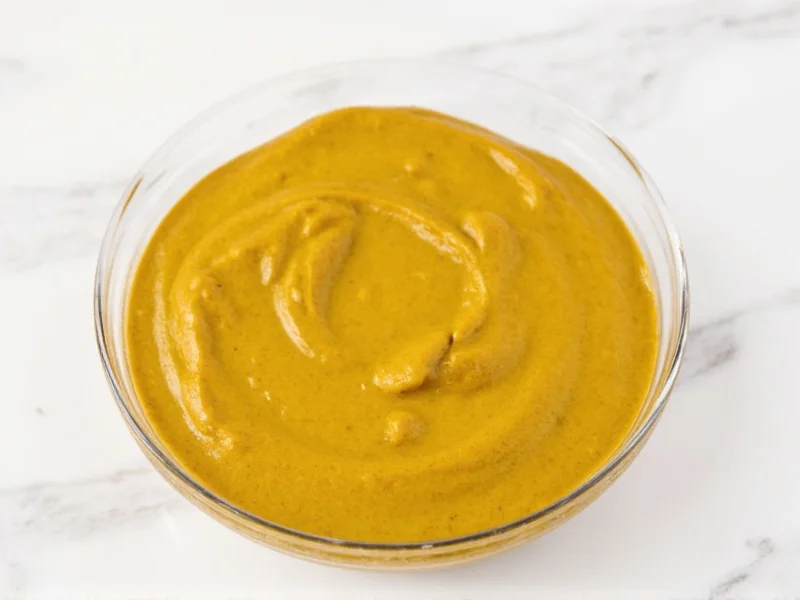Understanding what gives this popular condiment its distinctive kick starts with its core ingredients. Mustard seeds come in three main varieties—yellow, brown, and black—each contributing different flavor profiles. When these seeds mix with liquid, an enzyme called myrosinase activates, creating the pungent compounds that make mustard spicy. This chemical reaction explains why freshly prepared mustard has the strongest heat.
The Essential Mustard Ingredients Explained
Let's examine each component that transforms simple seeds into the versatile condiment we enjoy worldwide.
Mustard Seeds: The Foundation
Three seed types form the base of all mustard varieties:
| Seed Type | Color | Heat Level | Common Uses |
|---|---|---|---|
| Yellow (White) Mustard Seeds | Pale yellow | Mild | American yellow mustard, ballpark mustard |
| Brown Mustard Seeds | Brown | Moderate to hot | Dijon mustard, whole grain mustard |
| Black Mustard Seeds | Dark brown to black | Hottest | Traditional European mustards, Indian cuisine |
Yellow mustard seeds provide that familiar mild flavor in classic American mustard. Brown seeds deliver more complexity and heat, perfect for Dijon varieties. Black seeds offer the most intense experience but break down quickly during preparation.
Liquids: The Activating Element
The liquid component does more than just create the right consistency—it controls the chemical reaction that develops mustard's signature heat. Different liquids produce varying results:
- Vinegar: Creates stable, long-lasting heat (common in yellow mustard)
- Wine: Adds complexity while moderating heat (classic in Dijon)
- Water: Produces initial intense heat that fades quickly
- Lemon juice: Provides bright acidity without overpowering flavor
Acidic liquids like vinegar stop the enzymatic reaction early, preserving milder heat. Less acidic options allow more reaction time, creating hotter mustard that eventually mellow as the enzymes deactivate.
Additional Flavor Components
While seeds and liquid form the foundation, these elements complete the flavor profile:
- Salt: Essential for flavor enhancement and preservation
- Spices: Turmeric (for color in yellow mustard), garlic, paprika, or herbs
- Sweeteners: Sugar, honey, or maple syrup in honey mustard varieties
- Thickeners: Flour or starch in some commercial preparations
How Different Mustards Get Their Unique Characteristics
The magic of mustard lies in how these basic ingredients combine to create distinct varieties. Understanding what is mustard made from reveals why each type tastes different.
American Yellow Mustard
This familiar bright yellow condiment combines:
- Finely ground yellow mustard seeds
- Vinegar (for stable mild heat)
- Turmeric (provides vibrant color)
- Water, salt, and small amounts of spices
The vinegar halts the enzymatic reaction quickly, creating consistent mildness perfect for hot dogs and sandwiches.
Dijon Mustard
Originating from Dijon, France, this sophisticated mustard uses:
- Brown mustard seeds (sometimes with少量 black seeds)
- White wine (instead of vinegar)
- Minimal spices to highlight seed flavor
- No turmeric (natural pale color)
The wine allows more enzymatic activity before bottling, creating complex heat that mellows beautifully when cooked.
Whole Grain and Specialty Mustards
These varieties showcase texture variations while maintaining the essential mustard seed foundation:
- Whole grain: Partially ground seeds in a vinegar base with wine or beer
- Honey mustard: Yellow or Dijon base with significant honey content
- Spicy brown: Coarsely ground brown seeds with higher vinegar content
- English mustard: Primarily yellow seeds with higher heat compounds
The Science Behind Mustard's Transformation
When you understand what gives mustard its tangy flavor, you appreciate why ingredient ratios matter. The pungency comes from allyl isothiocyanate, created when myrosinase (an enzyme in mustard seeds) reacts with sinigrin (a glucosinolate compound).
This reaction requires moisture to activate. That's why dry mustard powder stays mild until you add liquid. The temperature and pH of the liquid affect the reaction:
- Cold liquids slow the reaction, creating milder mustard
- Warm liquids accelerate heat development
- Acidic liquids (vinegar) stop the reaction sooner than neutral liquids (water)
Commercial producers carefully control these variables to ensure consistent flavor in every batch of what is mustard made from.
Mustard Through History: From Ancient Remedy to Table Staple
The story of what is mustard made from spans millennia. Ancient Romans first combined mustard seeds with grape juice (mustum ardens, meaning "burning must"). By the 9th century, French monasteries cultivated mustard plants, and by 1812, the first commercial mustard factory opened in England.
American yellow mustard emerged in the late 19th century when German immigrants added turmeric to create the bright yellow color we associate with ballpark mustard today. Each historical development refined the basic formula of what gives mustard its distinctive character.
Creating Your Own Mustard at Home
Knowing what is mustard made from empowers you to craft custom varieties. A basic homemade mustard recipe includes:
- 1/2 cup mustard seeds (yellow, brown, or mixed)
- 1/2 cup liquid (vinegar, wine, or water)
- 1 tablespoon salt
- 1 teaspoon sweetener (optional)
- Spices to taste
For best results, soak seeds in liquid for 8-24 hours before grinding. The longer the soak, the milder the final product. Freshly made mustard tastes hottest initially, then mellows over 1-2 weeks as flavors develop—answering why homemade mustard recipe ingredients require patience.
Mustard's Global Variations
Cultures worldwide have adapted the basic mustard formula to local tastes:
- France: Dijon (wine-based) and whole grain mustards
- Germany: Sweet Bavarian mustard with apple cider vinegar
- India: Mustard oil and seeds in Bengali cuisine
- Japan: Karashi, a pungent brown mustard paste
- United States: Yellow mustard dominates, with regional spicy brown varieties
These variations demonstrate how the essential components of what is mustard made from can transform across culinary traditions while maintaining the core seed-liquid relationship.











 浙公网安备
33010002000092号
浙公网安备
33010002000092号 浙B2-20120091-4
浙B2-20120091-4